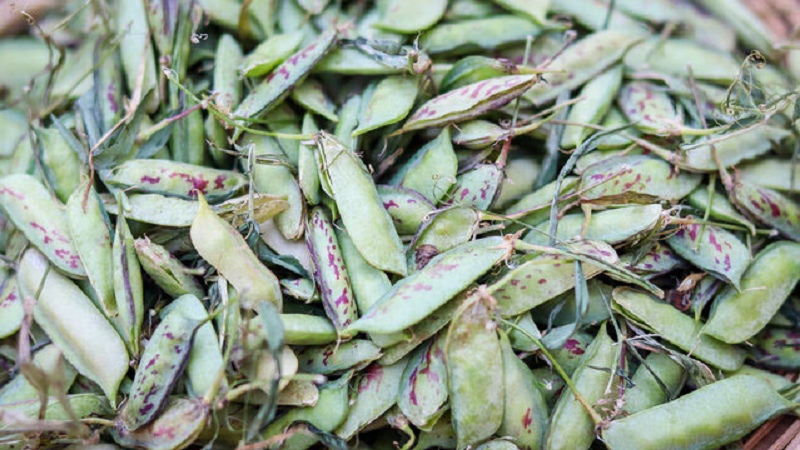Caution! This dal makes a person disabled, the lower part becomes lifeless
- byManasavi
- 08 Apr, 2025

Food has a special importance in Indian society and everyone knows the importance of pulses in it. Be it lunch or dinner, pulses are definitely made in the meal. Pulses are full of nutrients, which provide essential nutrition to the human body, and also keep away from many diseases. Doctors also advise that pulses should be a must in the diet. The water of pulses gives amazing energy to the body. In such a situation, it can be said that eating pulses is very beneficial for humans, but do you know that there is also a pulse, which does not nourish the body, but makes the body disabled. The part below the waist becomes lifeless. Today we will tell you about such a pulse, which is very dangerous for the body, due to which this pulse has been banned.
Which pulse is this?
The pulse that makes the body disabled is called Khesari dal, which is found in northern India and grows easily in the fields. This dal is in the form of small beans and this dal is taken out by opening the beans. This dal looks like tur. This dal is also called the dal of the poor, because it is quite cheap and easily grown. The scientific name of Khesari dal is Lathyrus sativa, it is a pulse. A chemical called beta oxalyl amino alanine is found in dal. This dal was banned in the year 1961, because symptoms of disability were seen in many people after eating it, due to which it was banned. Neurotoxins and some poisonous acids are found in this dal, which are very dangerous for the human body.
How do you become disabled
We have already said that Khesari dal contains neurotoxins and some poisonous acids, which are dangerous. Although eating this dal occasionally does not cause any harm, but if it is consumed regularly, then it starts making the body disabled. This dal numbs the nervous system of the body. The toxin present in it can also cause diseases like arthritis. This is the reason why this dal has been banned. However, now there is a constant demand to lift the ban.
How much ODAP in dal
Khesari dal contains 31 percent protein, while the amount of toxic ODAP (oxalyldiamino propionic acid) in it ranges from 0.15 to 0.35 percent. ODAP is a poisonous substance found in Khesari dal, which is responsible for making humans disabled. However, a person will become disabled only if it is used very often.
Benefits of dal
Khesari dal is harmful for the human body, but if it is used partially, it also cures many diseases of the body. Its consumption cures stomach problems. This dal is very beneficial for the eyes. It protects the skin from pollution. Rich in protein and iron, this dal also provides energy to the body. The only thing to keep in mind is that it should not be eaten in large quantities.
Demand to lift the ban
Maharashtra has lifted the ban on this dal. In January 2015, an expert committee of the Indian Council of Medical Research, Indian Council of Agricultural Research, Council of Scientific and Industrial Research and FSSAI recommended that the ban on sale and storage of this dal should be lifted. In November 2015, FSSAI recommended that the ban on varieties with low ODAP could be lifted. In 2016, the Government of India announced that it would lift the five-decade-old ban on Khesari dal. However, there is no formal notification of the end of the ban.
UK research in 2023
In February 2023, UK researchers published a draft genome assembly to identify and select traits for improvement, which would help develop a high-protein, low-input, tolerant, climate-smart crop and which would be suitable for small farmers. However, it is not yet clear whether the pulses being sold in the market have less ODAP or not.






